Chelsea’s summer of spending has seen an influx of world-class players to strengthen their squad. After a difficult start to the season with Chelsea leaking goals, including three apiece against West Brom and Southampton, Frank Lampard’s team has become a potent defensive unit. They’ve kept six clean sheets from eight games with just four goals conceded.
Part of this success has come from a stable defence of Kurt Zouma, Thiago Silva, Ben Chilwell, and Edouard Mendy. One name that has gone under the radar this season has been academy graduate Reece James. The England international was a surprise choice to start the season usurping César Azpilicueta with the two seamlessly rotating at right-back. James has been a revelation and has shown his true potential with a series of disciplined performances contributing in attack and defence.
This scout report will look at the traits and attributes that have made James such a potent force for Chelsea and how he’s performed this season. This analysis will dissect his style of play and how he fits into Lampard’s Chelsea.
Player profile
Reece James is a 20-year-old attacking right-back who has become a prominent member of the first team. A naturally gifted full-back, James is an all-round presence on the pitch where he’s contributed both in the defensive and final third of the pitch. James’ standout quality this season has been his attacking output where his major strengths are in chance creation where he uses his incredible crossing, passing, and athleticism to create goal-scoring opportunities. A versatile player, he is capable of playing as a defensive midfielder which points towards good positional sense.
James is a key weapon when it comes to breaking down teams in a low compact block with his ability to deliver pinpoint crosses for his strikers. Defensively, his abilities are not weaker – on the contrary, his physical strength and recoveries have been key in winning duels.
Full-backs in Lampard’s Chelsea
What we’ve seen so far is Lampard’s tinkering with several systems in the first couple months of the season. Favouring the 4-2-3-1 before employing a 3-4-3 briefly, and most recently opting for a 4-3-3. The latter has been very successful with Kai Havertz adapting to the ‘8’ role effectively but most prominently, it’s allowed for Chelsea to balance attack and defence.
James and Ben Chilwell have been encouraged to push forward and provide different angles of attack with the attacking midfielders/wingers looking to cut inside. Chilwell, in particular, has been seen in the box when the ball is progressed down the right adding an extra dynamism to Chelsea’s play.
The core principle of Lampard’s tactics and philosophy is to build up through the full-backs which he considers is a key concept. The double-pivot has been a lot more disciplined with N’Golo Kante and one of Mason Mount or Jorginho providing a blend of attack and defensive qualities. This has enabled others to flourish and the full-backs to push up.
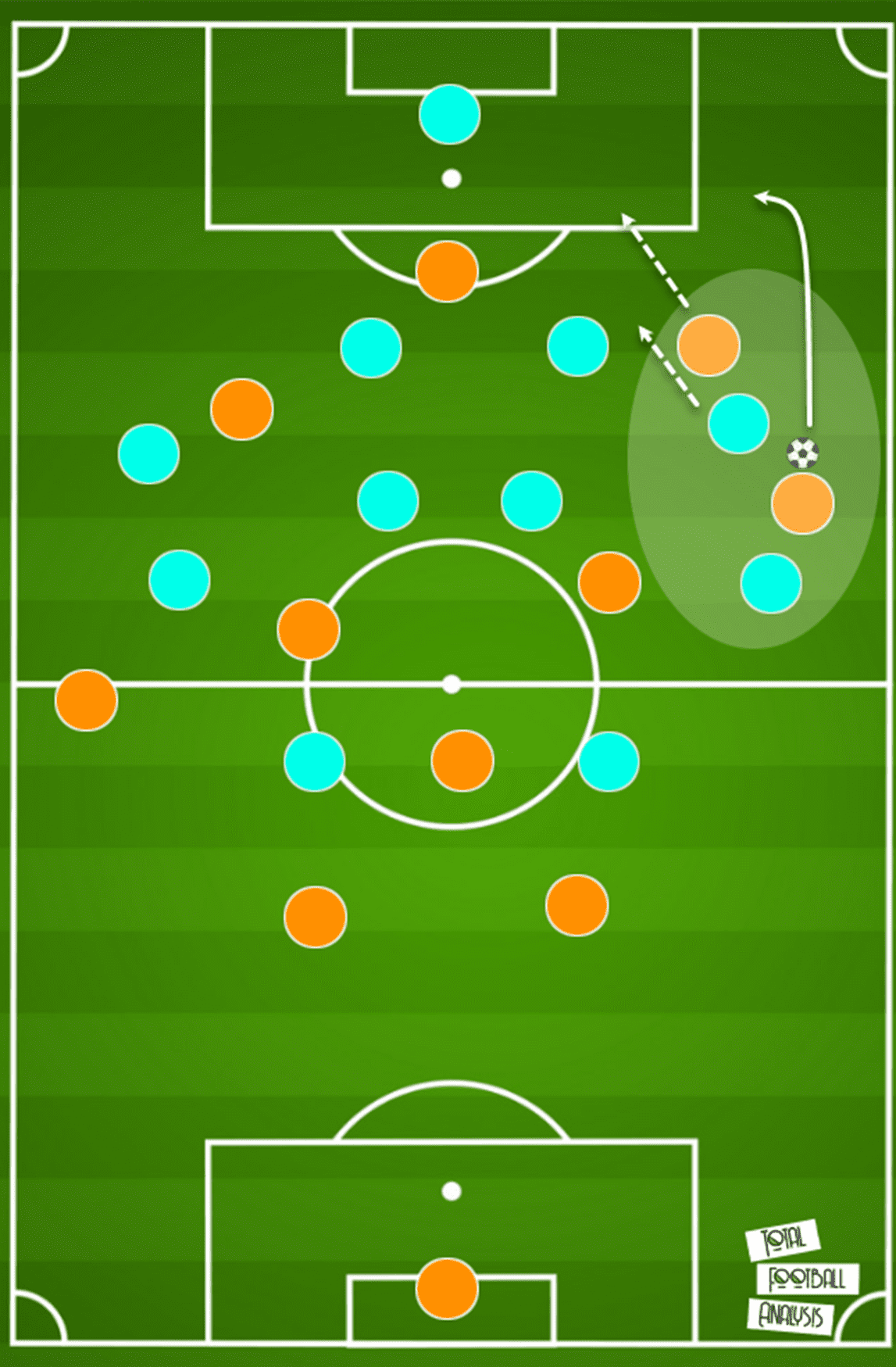
Above, we can see Lampard’s preferred setup and how they prefer to build up. With the full-backs as a key component here, Lampard wants build-up and progression down the right with Chilwell acting as an auxiliary winger on the left. Whether it’s the 4-3-3 or 4-2-3-1, Lampard’s use of inverted wingers means that width has to come from the full-backs.
The ball will start wide but eventually come infield to keep teams centrally occupied which also allows space for the full-backs to push on. Ziyech and Werner have been deployed as the two wide players lately, with the former able to cut inside or stay wide and cross whilst the latter occupies the half-space and attacks the box which takes away the full-backs. This opens up the space for Chilwell and James to attack and deliver into the box.
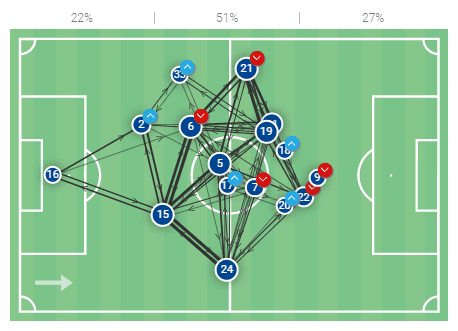
Notice above in the pass map which indicates the team’s average positions against Rennes in the UEFA Champions League last month. What stands out is the two full-backs (#21 & #24) were at the halfway line. The thickness of these links indicates the frequency of passes between them with Kurt Zouma and James exchanging 47 passes between each other, the highest of all Chelsea players.
While the use of full-backs has become a modern trend in a team’s build-up, Lampard’s ideology is to use them both as attacking and creative outlets for their dangerous forwards. How well has James done in this system then?
Attacking play – Delivery & Positioning
A hallmark of James’ play this season has been largely around his attacking attributes and contributions. The style of football he’s been playing under this season has been much more attacking and one where he’s been given the license to push forward. Like every Chelsea defender, he didn’t have the best of starts but was consistent in his willingness to get up and down the pitch. However, with greater balance and protection across the board, James’ attacking qualities are much more enhanced since.
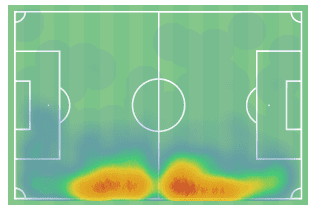
Looking at his heat map above, you can see where he is most active. It indicates that his usual position on the pitch is just after the halfway point which suggests that both he and Chelsea are much more on the front foot. Though it’s worth noting that he’s got an almost equal presence at both ends of the pitch. James is able to move up the pitch quickly and though Chelsea build-up through the wide players, there is a focus on the central areas as it reaches the middle third. This ensures the full-backs are given their due space for switches of play and free passing options as is seen below.
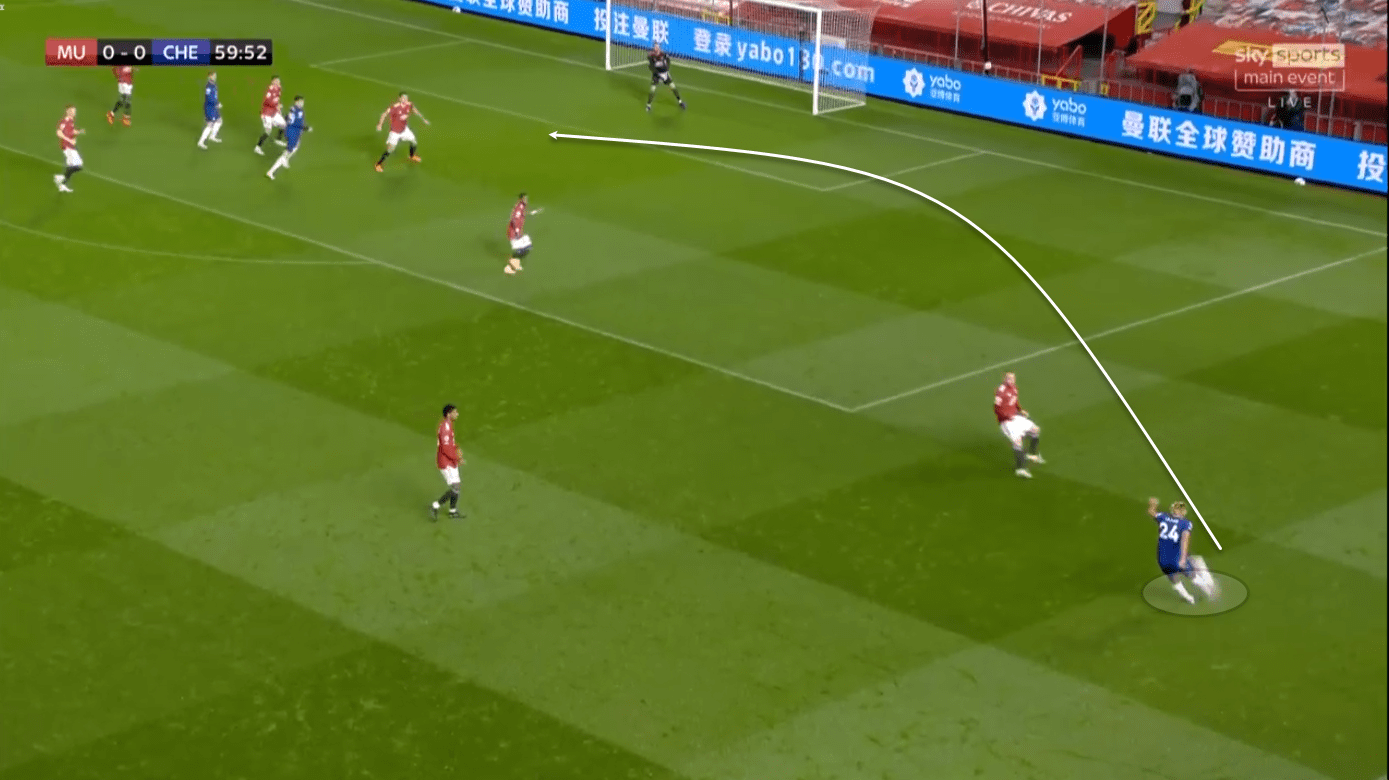
James received the ball from midfield in acres of space because of Manchester United’s want to protect their centre-backs. Just the distance alone between Luke Shaw and James indicates how centrally positioned Shaw was, giving James time to pick up the ball and steady himself for a cross. This brings us to his best attacking quality: his crossing. The quality he’s shown in his delivery has been second to none and possibly the best Chelsea have available.
James is able to get into good crossing positions to create different angles, whether that be wider or from the half-space. Because of Chelsea’s flanks being relatively free, James is able to get into an optimal crossing position. The English right-back is able to accurately deliver floated crosses for the towering Olivier Giroud or Tammy Abraham, or he whipped ones for Timo Werner and Chilwell. James ranks second for crosses per 90 minutes (6.17) and first from the right flank (6.02).
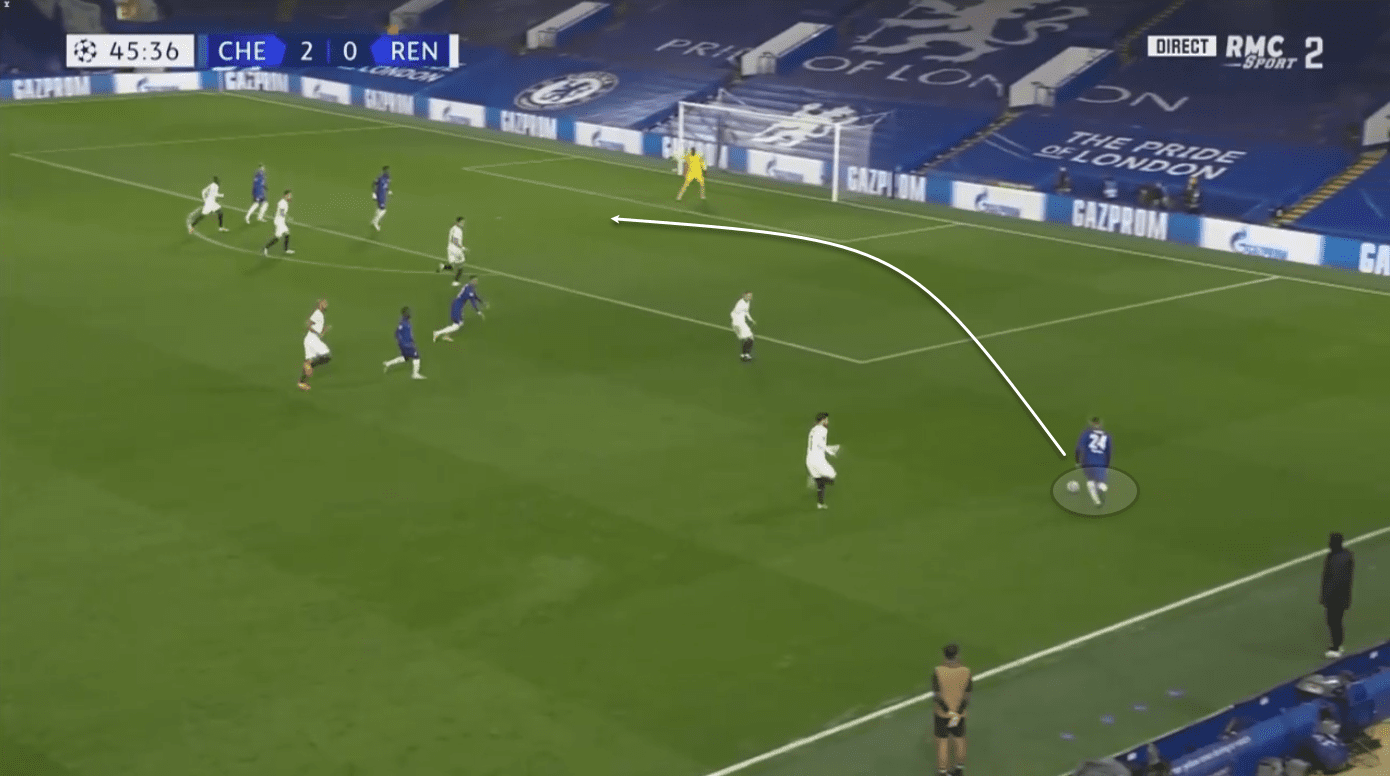
Similar to the first example, James was able to get in behind Rennes’ defensive line and finds himself in space. Upon receiving the ball, James has two main targets to aim for: Abraham and Werner, both of whom are willing to gamble a run into the highlighted area. This ‘corridor of uncertainty’ means the goalkeeper is caught in two minds as to whether he should come out to claim the cross or stay on his line. He averages 5.42 crosses per 90 minutes with a 37.7% accuracy rate which is indicative of his frequency in this area.
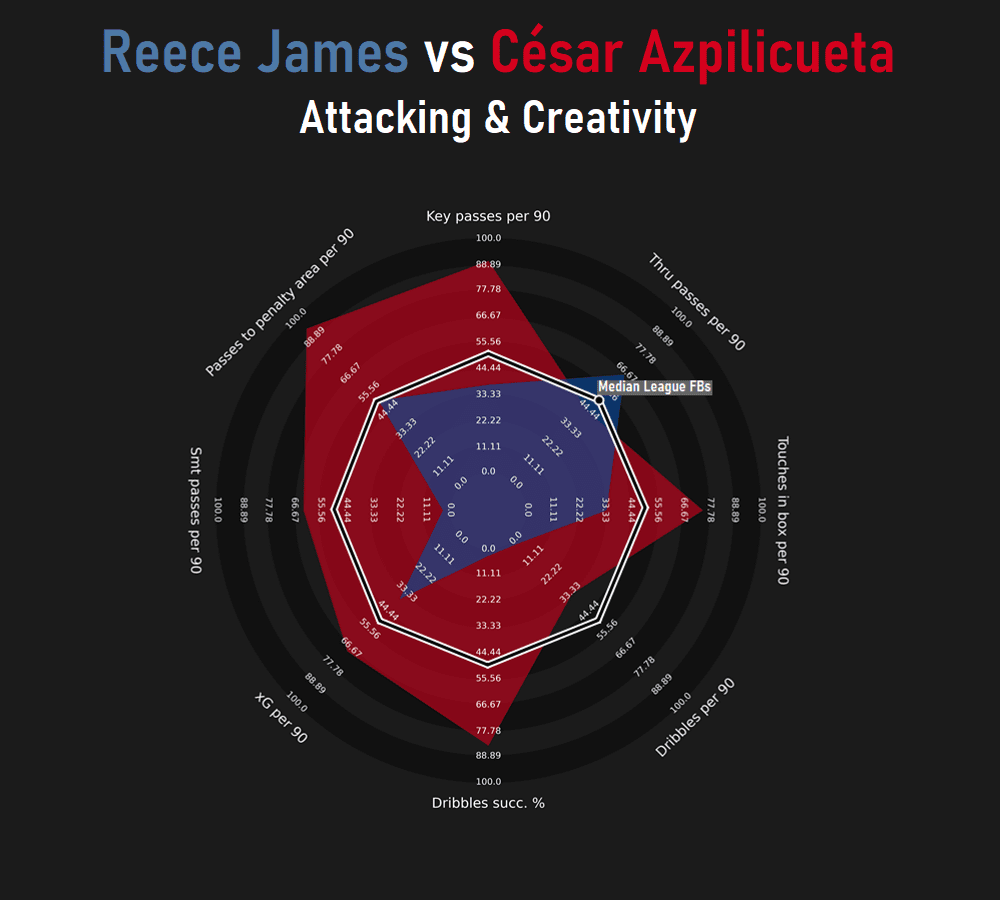
This graphic compares James to Azpilicueta and how they both have performed in the league. It’s important to note that Azpilicueta has fewer minutes than James, but most importantly, James averages close to the league when it comes to these metrics. His through passes and passes to the penalty area remain high and points towards his involvement in the attacking third.
James isn’t just good at getting into crossing positions by being in space, but he can take on players in 1 v 1 situations. Part of what’s made him so adept going forward is his pace, strength, and ability to get past the opposition full-back. With 1.6 dribbles per 90, James is frequent in his forays forward but most importantly he holds a 61% success rate. This alone indicates how reliable he is in these scenarios and given how a lot of teams look to sit back against Chelsea, this is a good way of getting in behind full-backs.
He uses his good positioning ability to understand his place and knows when he needs to take on his marker. In addition, he isn’t afraid one to shy away from an offensive duel, meaning he will actively seek an opportunity to beat the player. In doing so, he can eliminate a player from the attacking move giving Chelsea an advantage as is.
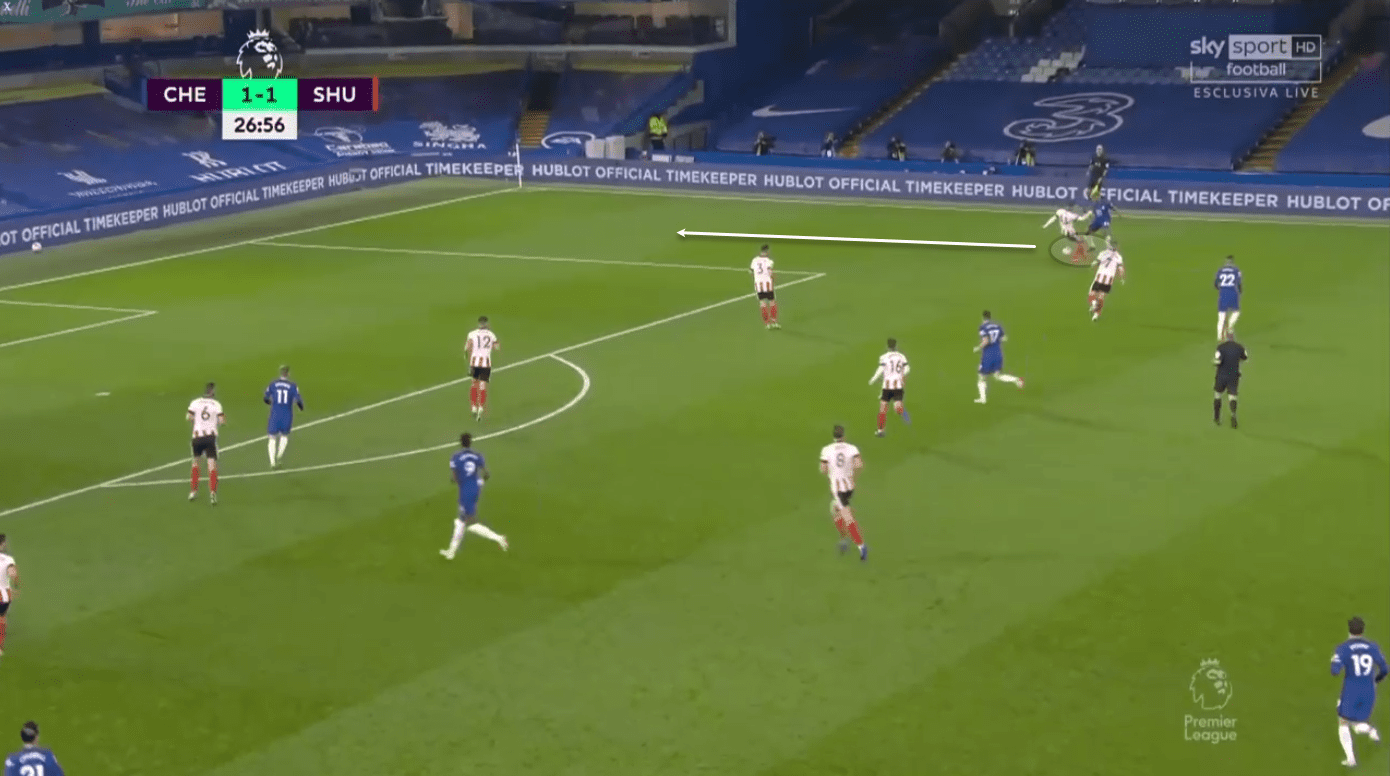
Here against Sheffield United, James is closed down by the full-back as he receives possession. He’s intelligent here where he immediately plays the ball past the defender knowing there is lots of space in behind. In this game, Sheffield played a low block, yet James still found space to operate in to deliver his menacing crosses.
The Ziyech/James partnership
Part of the excitement building up to the start of the season was the prospect of Ziyech lining up at the right-wing. He’s picked up where he left off at Ajax and produced some scintillating performances since. Against Sheffield United, he picked up an assist but most importantly, the synergy he formed with James was stand-out. Their contrasting styles create unpredictability through their crossing angles and creativity.
The typical movements the two players can conjure up is to create space on the overlap for the right-back to cross from whilst on the left, we find Chilwell attacking box. It becomes difficult for teams to stop both methods given the abundance of talent in the attacking areas.
Ziyech is a left-footed player who likes to send inverted crosses which means he will come inside a lot more. The attention this attracts means James can take advantage of the space on the overlap. The pair between them delivered 11 of Chelsea’s 16 crosses against Sheffield United, and as the image below portrays, they were able to pull players out of position to create space for each other.
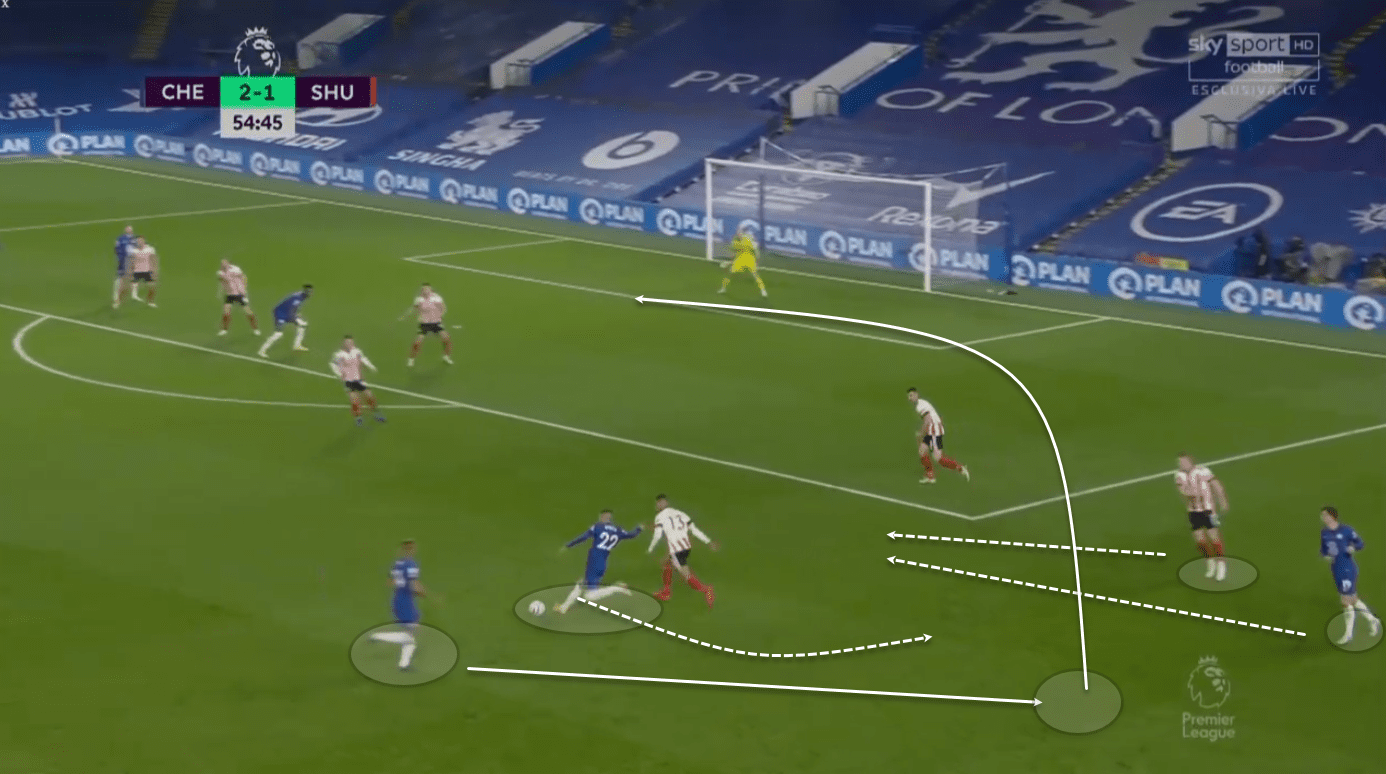
Ziyech makes a run towards the box pulling his marker with him. While Mason Mount’s presence in the wide right area distracts the other Sheffield United player, the forward movement by Ziyech creates enough space for an overlapping James to receive a pass after his cut-back. From here, James has enough time and space to send in a dangerous cross. The duo are blossoming into one of the most exciting partnerships in the Premier League this season and one that will be critical to breaking teams down going forward.
Defending
Chelsea have had their defensive issues this season but their turnaround in form has seen all four defenders contribute. A lot of the defending that James does involves tracking back and making recovery runs making his off-the-ball work rate excellent. Naturally, his high positioning means he is often tracking back, so his pace, defensive positioning, and recoveries are vital to his game. You’ll have seen how James is able to stop wingers from counter-attacking through a mixture of brute force and efficient defending.
One of the reasons he’s been afforded the room to push forward without Chelsea conceding goals is the settled centre-back pairing. Zouma and Silva have formed an effective partnership that has allowed James and Chilwell to push up, not leaving their defensive partners exposed. The movement of the double pivots is key to protecting the defence. They’re able to nullify and delay attacks long enough for James to track the ball carrier. Usually, he’ll sprint back and catch up to the carrier and disrupt the move before it reaches the box.
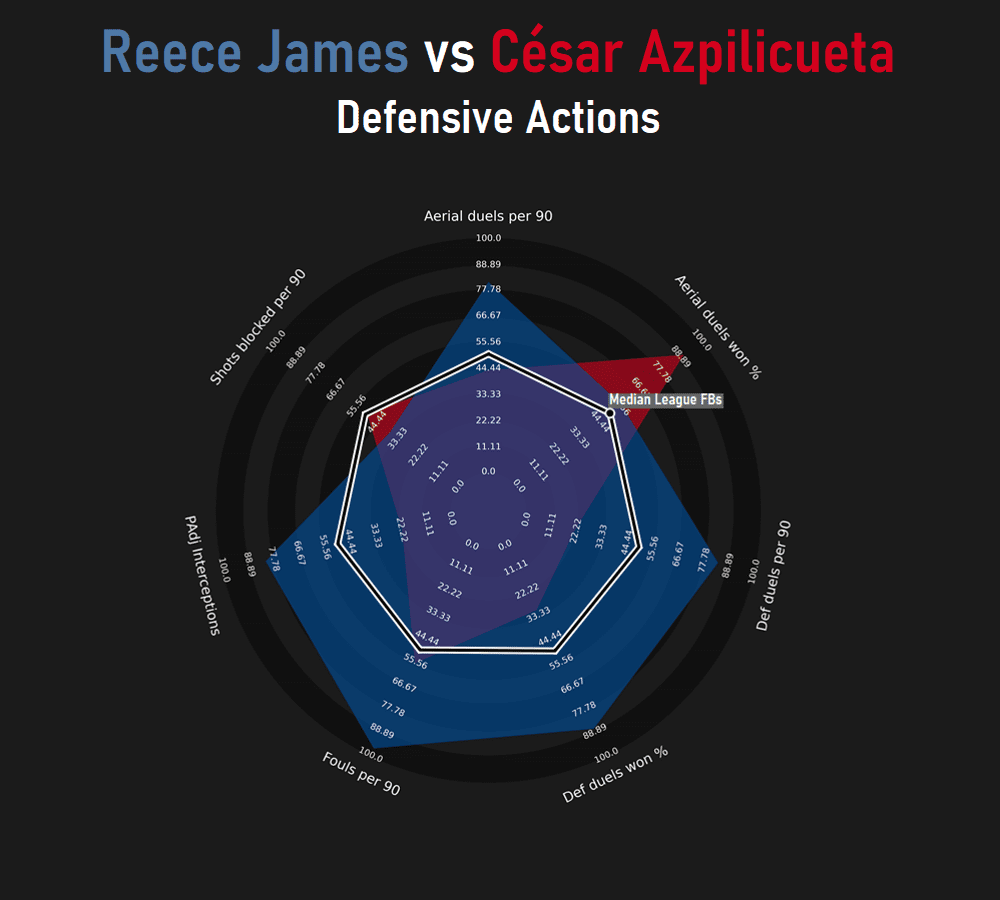
Defensively, the graphic suggests that James has performed quite remarkably. He ranks higher than the league average in every metric, suggesting that he’s more than involved when it comes to defending. His PAdJ interceptions is one metric to highlight because of his playstyle and proves that he has the ability to be well-positioned defensively.
Averaging 7.37 recoveries per 90 (41% in the opposition half) shows how frequently he’s engaging in chasing wingers and full-backs this season, albeit with a reasonable degree of success. Naturally, the percentage of recoveries in the opposition half is high as he spends most of his time higher up the pitch. This also translates to James being able to help his team transition from defence to attack. If he can recover possession higher up, the resulting turnover can be very beneficial for Chelsea creating a counter-attacking opportunity.
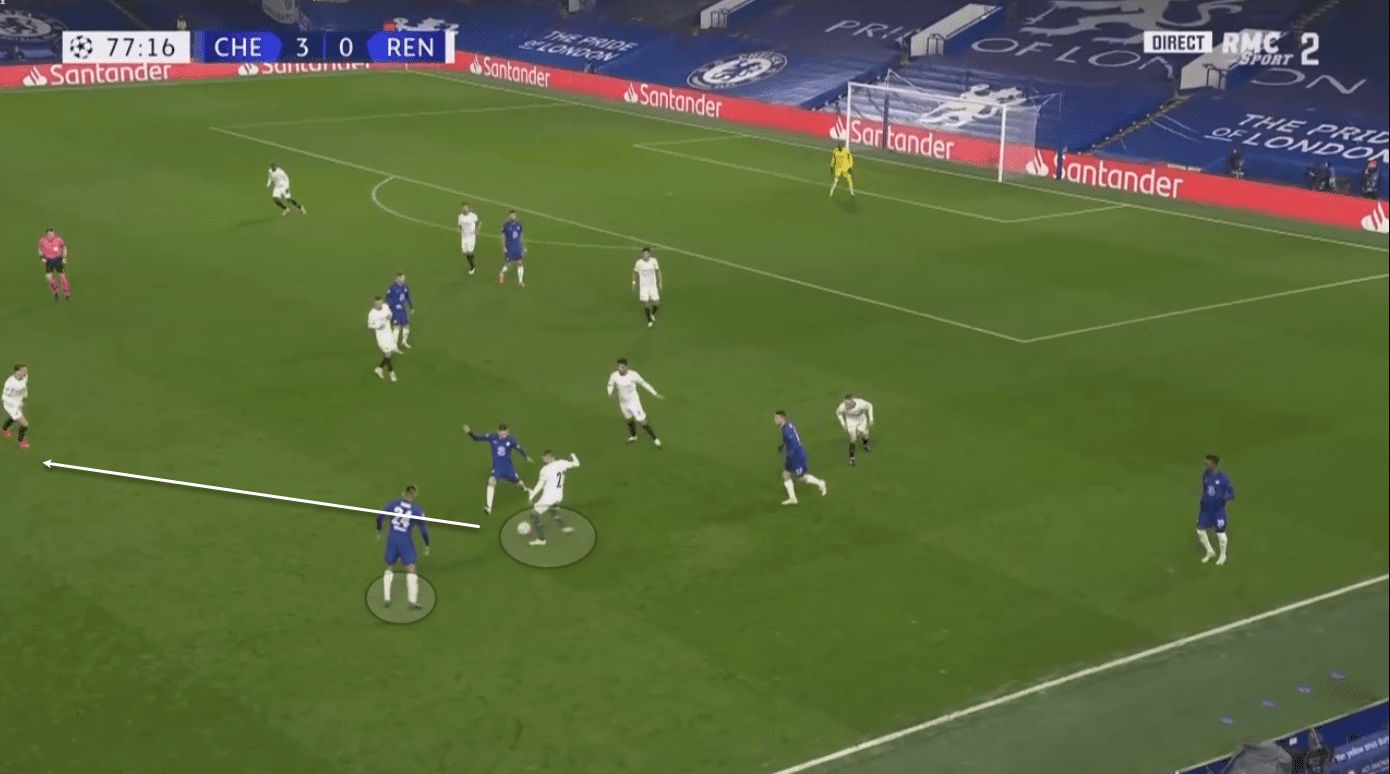
Here against Rennes, James is positioned high up the pitch when they win back possession. The ball carrier plays a pass into the midfielder and in this case, James is slightly too high out of position.
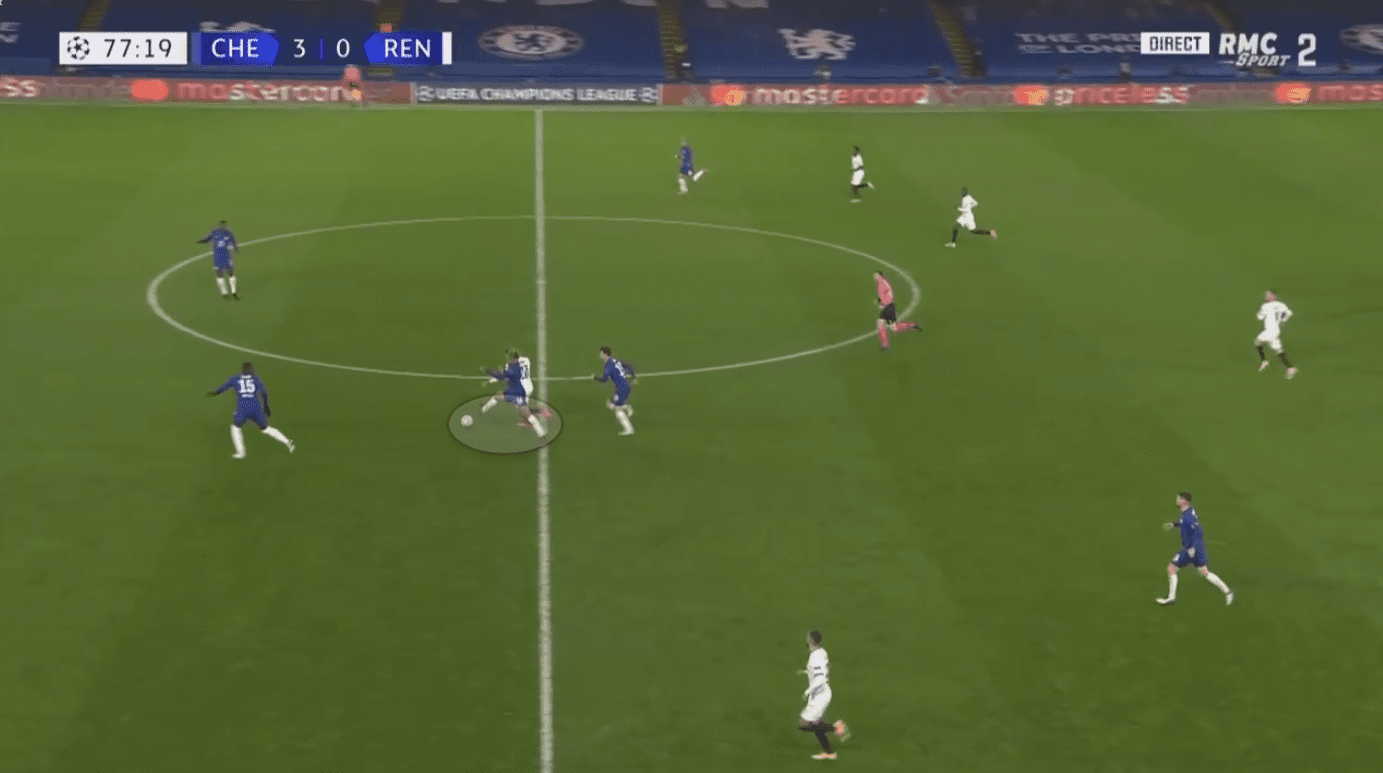
In this case, he’s able to make up enough ground to stop the counter-attack and uses his strength to win the duel. As you can see here, Chelsea’s centre-backs were exposed and while they might have stopped the lone striker, the situation could have been worse. His recovery pace and intelligence is already at a high level and is suited to Chelsea’s current style given their high possession statistics. At 5.77 defensive duels per 90 with a success rate of 60%, it’s clear to see he can win it back when engaged, however, the one area that he lacks is in his defensive positioning in 1 v 1 situations.
Given how often he’s in attacking positions, James isn’t exposed to as much 1 v 1 defending in his own half. Knowing where to be positioned when it comes to it becomes important – especially against wingers with pace and flair. A lot of his defending, as we’ve said, is through recoveries, so when he is faced with a 1 v 1 duel, there are times where he can benefit from better positioning.
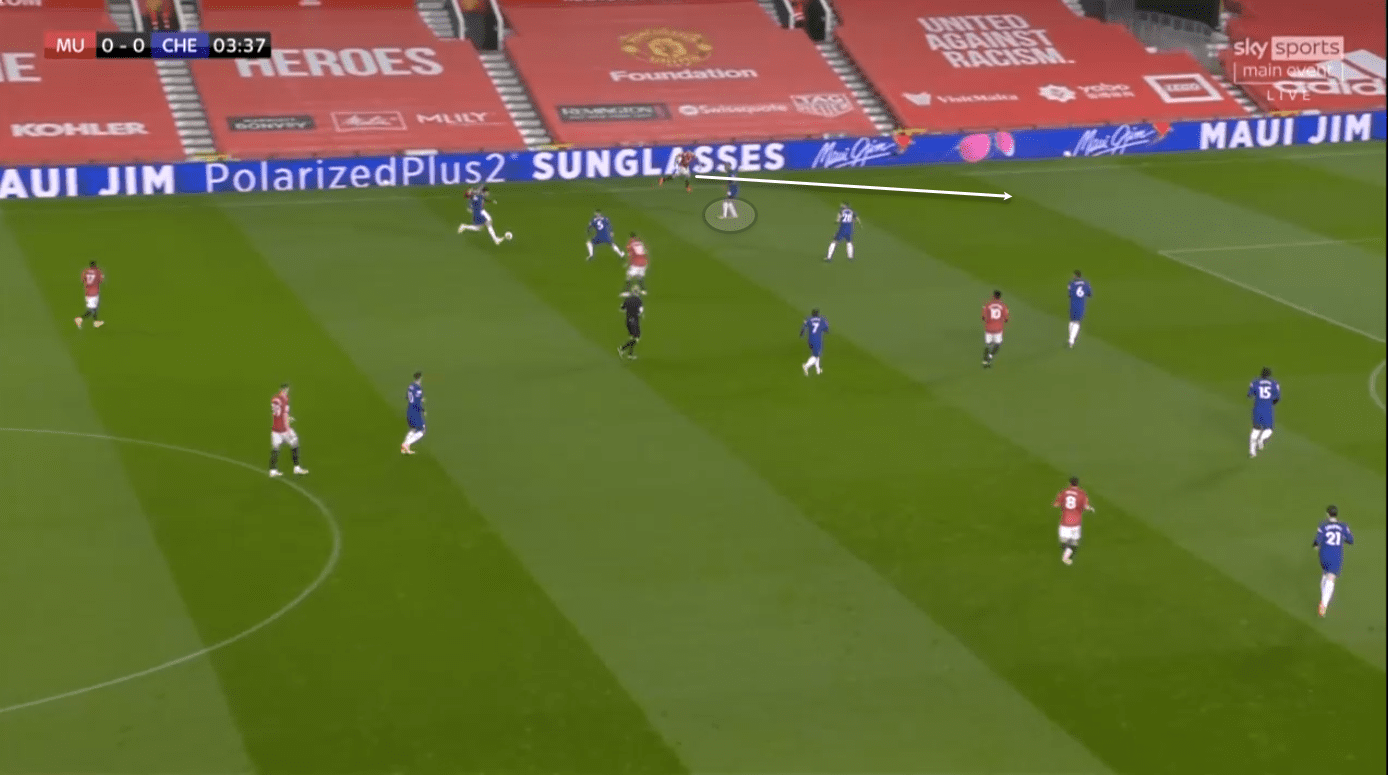
Taking this example here, James is holding a good line with the back five, however, his body positioning is too straight which means he isn’t able to turn quick enough to stop the Manchester United winger from driving down the flank. If his body was positioned slightly towards the winger, then there’s a good chance combined with his pace that he can either stop or slow the move down. Though this is important, learning from arguably the best 1 v 1 defender in the league in Azpilicueta and having Silva beside him will only speed up his development.
Final remarks
For someone so young, James is already displaying a maturity beyond his years. At just 20 years of age, James is proving himself to be a complete defender and one that can also challenge Alexander-Arnold for England’s right-back spot for years to come. This tactical analysis has proved he was an able deputy to Azpilicueta last season, but has truly come into his own and even created a dangerous partnership with Ziyech. He will only improve this season and because of Lampard’s importance of full-backs in his system, become an even more important member of the squad.

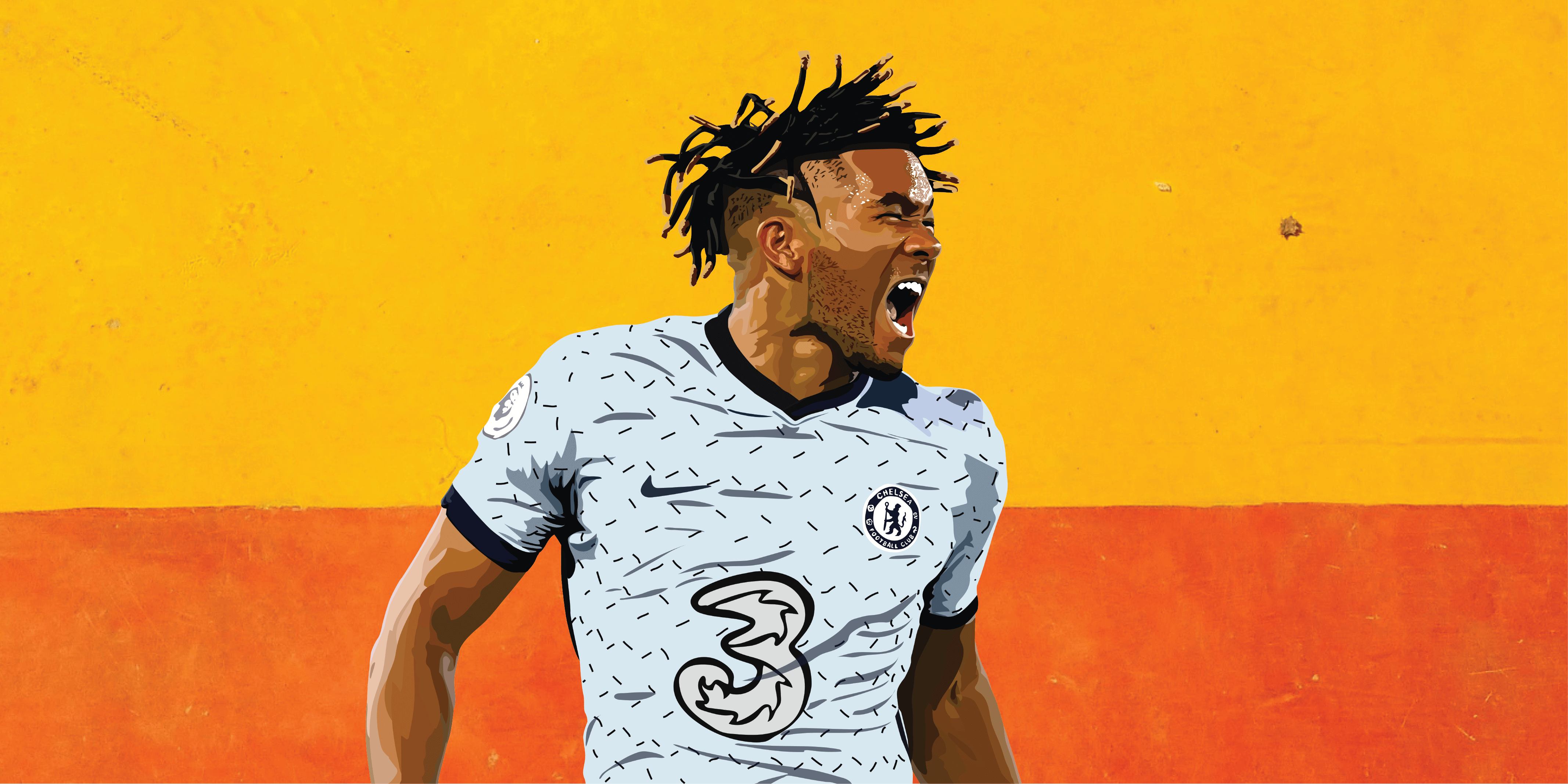



Comments